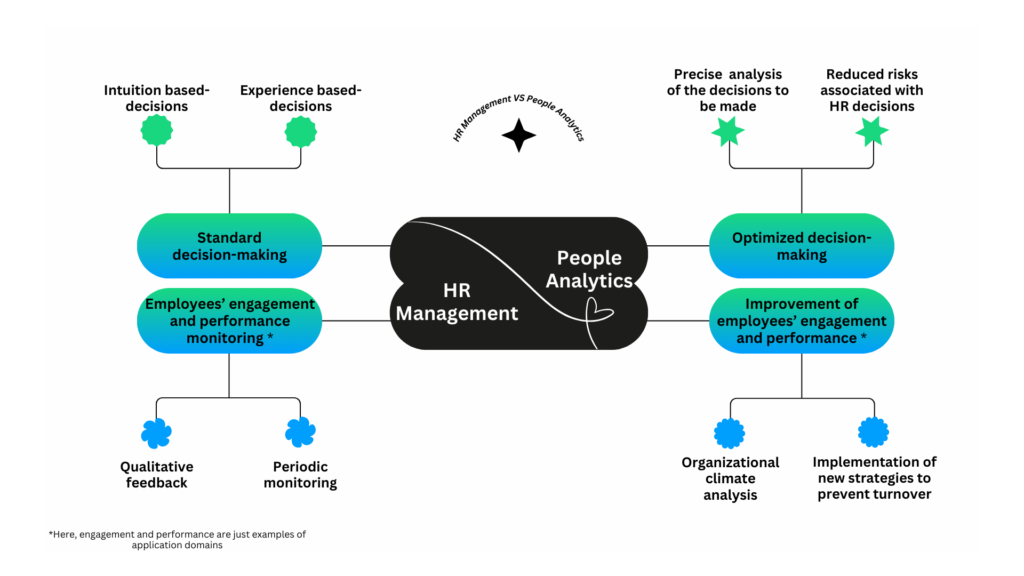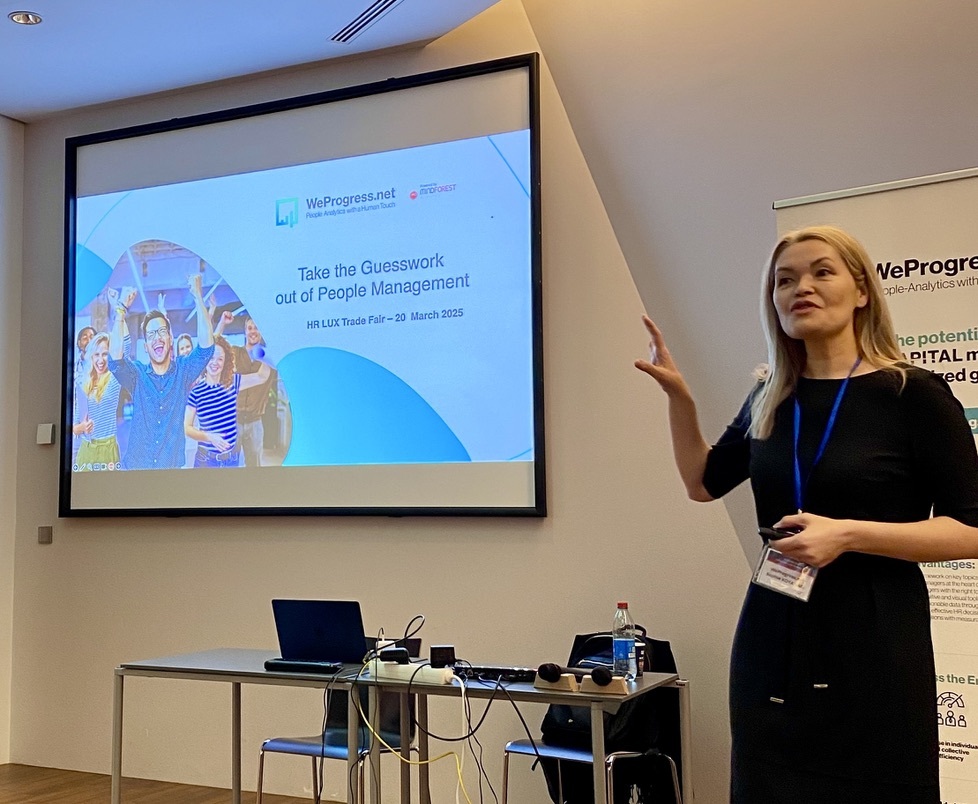Have you Examined the Advantages of Working with Data Analytics yet?
Data analysis is constantly revolutionising the way companies operate and make decisions. As a result, when it enters the world of human resources, it gives rise to a whole new field: People Analytics.
Traditionally, HR management has relied heavily on intuition, experience and standardised procedures, but with the emergence of technology and the accumulation of vast amounts of data, it has become possible to adopt a more scientific and evidence-based approach to HR management. The practices of departments such as marketing and finance, which were already using data analysis to optimise their operations, inspired HR departments to adopt similar methods: from this was born HR data analysis, which then became known as People Analytics.
What does People Analytics entail?
People Analytics involves using data analysis techniques to optimise human resources management. It offers an enlightened view of issues such as:
Optimising decision-making:
– Making it possible to conduct precise analyses of the decisions to be made
– Reducing the risks associated with HR decisions, such as recruitment errors or ineffective retention strategies
Improving employee performance:
– Identifying KPIs to understand what motivates and improves employee performance
– Tailoring strategies to the specific needs of employees
Employee engagement and retention:
– Identifying and remedying employee satisfaction and engagement issues (organisational climate analysis)
– Preventing turnover and implementing new strategies to retain and empower staff
HR will not be replaced by data analytics, but HR who do not use data and analytics will be replaced by those who do.
Nadeem Khan

The impact on HR decision-making
People Analytics enable HR managers to make better decisions, which are more accurate and objective because they are based on concrete facts rather than intuition. Take absenteeism, for example: HR managers used to use monthly or quarterly reports to monitor absenteeism, so decisions to remedy the situation were often based on assumptions and qualitative observations. This could however cause problems in terms of a lack of responsiveness and precision in identifying the root causes of absenteeism, for example.
Thanks to People Analytics, it is more a question of collecting real time data on absences, the reasons declared, specific periods, trends by department or by team and then analysing them to identify patterns and correlations with factors such as stress, working conditions, workload, etc. All of this can then be used to implement strategies aimed at adjusting and improving employees’ working conditions
Anticipation and prevention: Thanks to predictive models, it is possible to anticipate future behaviour, such as the risk of a key employee leaving, for example. At the same time, companies can implement proactive retention strategies designed to minimise the risk of such employees leaving. For example:
– Transparency and communication: this is about avoiding excessive surveillance, as it is crucial to communicate clearly to employees that the data collected is being used to improve their experience and working environment, not to monitor them individually.
– Guaranteed confidentiality: this means assuring employees that all information is treated confidentially and anonymously.
Improving the Employee Experience: By using satisfaction surveys specifically targeting the employee experience, we can better understand employee needs and expectations, and identify areas for improvement. These surveys can be scheduled on a regular basis; the main aim is to implement tools to regularly monitor employee engagement and satisfaction with the aim of creating a more satisfying working environment.
Subsequently, this improvement will then contribute not only to better employee retention, but also to improved employee productivity and performance, and therefore to the reinforcement of the corporate culture. For example, by helping to set up a career path, because planning an employee’s career path (e.g. by involving internal coaching and training) gives an employee the feeling that the company wants them to stay, and that their commitment and work are appreciated.
Cost optimisation: Better employee retention also means lower turnover, and therefore lower recruitment costs.
Dealing with potential disadvantages and providing solutions
Although People Analytics offer many advantages, there are also potential disadvantages and challenges:
- Dehumanisation and negative perception: The focus on data and analytics can be perceived as dehumanising the people management process, where employees are seen as numbers rather than individuals.
- Employee mistrust: Employees can feel a loss of confidence and morale if they think their actions are constantly being monitored and analysed.
To remedy this, WeProgress organises workshops with the employees concerned, to support them through the engagement analysis process and instil confidence in them, particularly with regard to the importance and usefulness of answering the questionnaire correctly.
In short, People Analytics is radically transforming the field of human resources management, using reliable data and in-depth analysis to make more informed decisions and create a more efficient and competitive organisation. WeProgress, with its advanced People Analytics tools, offers companies a powerful platform for optimising their talent and creating a more effective and harmonious working environment. By combining transparency, ethics and technology, WeProgress helps organisations anticipate needs and take proactive measures for long-term success.
Why are the WeProgress platform and People Analytics the winning duo?
WeProgress is a leading People Analytics platform, providing tools to help companies maximise the potential of their human resources:
– Analysis of needs and skills: WeProgress helps to bridge the gap between the skills required for a position and employees’ current skillsets and therefore contributes to optimising recruitment.
– Performance monitoring: The platform provides interactive dashboards enabling customers to monitor their employees’ key performance indicators in real time and identify areas requiring intervention.
– Employee engagement: By analysing engagement and satisfaction data (gathered from a questionnaire targeting these themes), WeProgress helps companies develop effective strategies to improve employee well-being and retention.
Information is the oil of the 21st century, and analytics is the combustion engine.
Peter Sondergaard
Let us help you
WANT TO RECEIVE OUR LATEST THOUGHT LEADERSHIP CONTENT?
Related posts
 Take the Guesswork out of People Management
Take the Guesswork out of People Management
 From processes to people: achieving quality
From processes to people: achieving quality
 Daring to lead Positive Transformation: What if Positive Emotional Capital was your key to sustainable change?
Daring to lead Positive Transformation: What if Positive Emotional Capital was your key to sustainable change?
 Why hire Change management professionals? We can do it alone!
Why hire Change management professionals? We can do it alone!
 Digital Transformation and Change Management: Lessons shared in an event hosted by Cebi and MindForest
Digital Transformation and Change Management: Lessons shared in an event hosted by Cebi and MindForest




